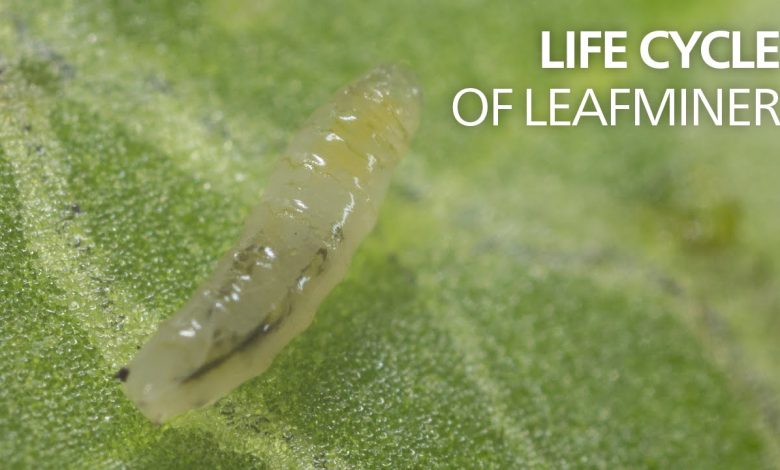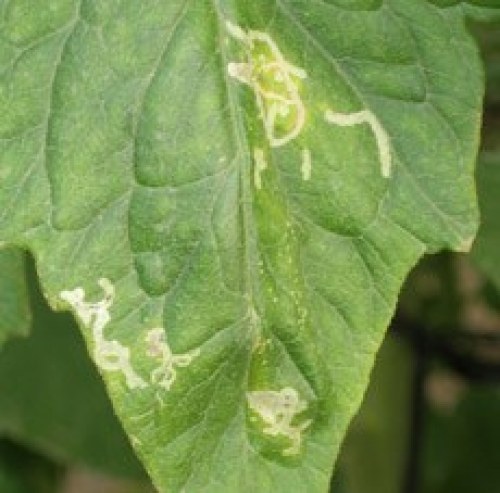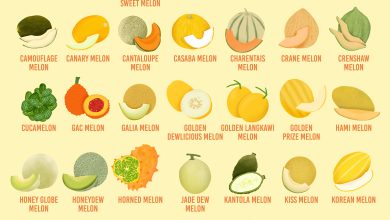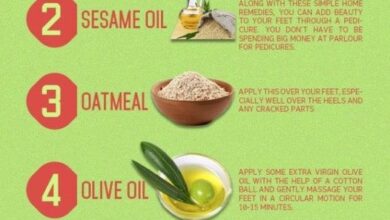Liriomyza: Everything you need to know about these tomato miners

Very good to everyone. A few days ago I published an article about the Tuta Absoluta. A very voracious pest that affects tomatoes and other Solanaceae causing very serious damage. In today’s article we are going to talk about Liriomyza and its control methods.

Liriomyza Trifolii: What is it?
This adult fly has a yellow head, legs, and ventral surface, with a gray-black thorax and abdomen. The wings of Liriomyza are light-transparent in color and are usually less than 2 millimeters in size. The eggs are initially clear, later turning milky white, oval in shape and small in size. The larvae have a transparent color at first, turning yellowish-green in their last stages of development.
The truth is that the stains they leave are similar to the Tuta Absoluta. Both species are leafminers, whose phytophagous larvae feed on the mesophyll, creating those very particular galleries. But the Tuta is a lepidoptera (moth) and Liriomyza a diptera (fly), in addition to a priori, the Tuta is more harmful.
The Agromyzidae family is made up of about 2,500 species. Within the order Liriomyza there are 4 important families: Bryoniae, trifolii, strigata and huidobrensis. They can only be distinguished from each other by the type of gallery they excavate in the leaf. We will focus on the Trifolli family as it is the most frequently affected Solanaceae.
How to detect Liriomyza?
This fly lays its eggs on the lower leaf surface, inserting them just below the epidermis with its ovipositor apparatus. Once the eggs hatch, the larvae feed on the mesophyll of the leaf, creating irregularly shaped galleries.
Thus, we can detect the presence of this fly if we see punctures on the back of the leaves or these characteristic galleries (they usually become visible 3 days after oviposition). As in the case of tuta, sticky traps or pheromone traps can also be placed to detect the presence of this pest.
Tomato leafminer fly: What damage does it cause?
The damage caused by this fly is practically minimal compared to the Tuta, since the larvae do not usually feed on the fruits, so the attacks are focused on the leaves.

Due to the feeding of the mesophyll, the affected leaves lose photosynthetic power, which can cause some leaves to fall. These bitten leaves are susceptible to being affected by other bacterial or fungal diseases by presenting open wounds.
Despite these losses in plant growth, crops such as tomatoes are quite resistant and can withstand these damages to a greater or lesser extent.
Fight the Liriomyza fly
Cultural practices against Liriomyza
The measures I have observed are practically identical to those that I mentioned to you to combat the Tuta, they are the generic ones for any miner. Now it is clear that Liriomyza, being a «less aggressive» pest, would not be necessary to take so many precautions, unless you lived in an area where it usually occurs. I think that with good cultural practices (eliminate weeds, rotate crops, reuse pruning remains, etc…) it is enough to prevent its appearance.
Now if you are unlucky enough to remove the leaves affected by both galleries and bites and wait a bit to make a new plantation of the same species that has been affected.
Biological control against Liriomyza
This fly has the «bad luck» of being parasitized by other species, which usually keeps them at bay. Wasps of the families Braconidae, Eulophidae and Pteromalidae are the most common and known within natural control. Predatory insects and diseases tend to affect this species less, although adults are susceptible to predation by a wide variety of species, particularly the more than well-known ants. For all this, it is more advisable to cultivate aromatic plants and flowers that can attract these wasps than to treat the crop with phytosanitary products or other aggressive treatments.
Chromatic traps are also effective. As I already told you, flies are attracted to a colored plate and when they come into contact with it they get stuck. They can be made at home with foam rubber and rat glue.
References
- Chandler, LD, FE Gilstrap. (1987). Seasonal fluctuation and age structure of Liriomyza trifolii (Diptera: Agromyzidae) larval populations on bell peppers. J. Econ. Entomol. 80, 102-106.
- Dove, JH (1985). The agromyzid leaf miner, Liriomyza trifolii (Burgess), a new pest of potatoes and other vegetable crops in Mauritus. Act Hort. (ISHS) 153, 207-218.
- Fagoonee, I. and V. Toory. (1984). Contribution to the study of biology and ecology of the leafminer Liriomyza trifolii and its control by Neem, Insect Sci. Appl. 5, 23-30.
Little more, I hope this article will help you to differentiate between Tuta and Liorimyza. This way you will be more prevented even if any of these pests affect your crops.
All the best




![Photo of Gomero or Ficus Elastica: [Planting, Care, Substrate and Irrigation]](https://www.complete-gardening.com/wp-content/uploads/2021/06/rubber_tree_1585202449-390x220.jpg)